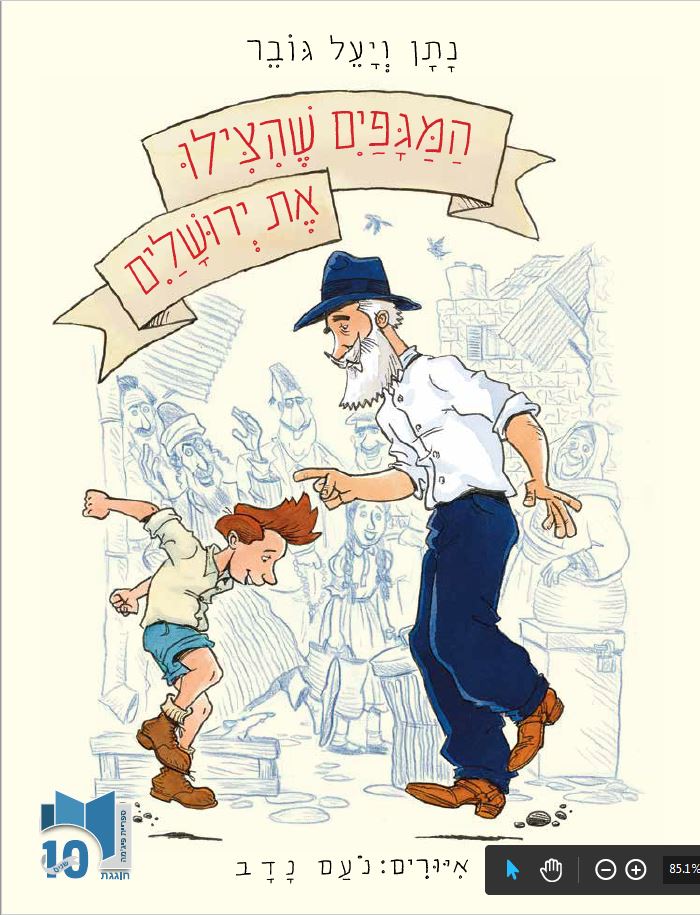
The Jordanian Emir wants special boots unlike any others. A Jewish shoemaker gives him what he wants. And what does the shoemaker want and wish for? He only longs to return to Jerusalem. A story about Jerusalem and peace.

The Jordanian Emir wants special boots unlike any others. A Jewish shoemaker gives him what he wants. And what does the shoemaker want and wish for? He only longs to return to Jerusalem. A story about Jerusalem and peace.
The story of the Jewish shoemaker and Emir of Jordan was passed down from one generation to the next...
Read MoreDear Parents,
The story of the Jewish shoemaker and Emir of Jordan was passed down from one generation to the next – from grandfather to grandchild, as did the secret of the squeaking boots, and the love for Jerusalem.
“The past moves within the present” (Zelda)
Stories about people, objects and events are passed down from one generation to the next. They are stored in our memory, join contemporary experiences, and sometimes change over time. Storytelling is a foundation of Jewish tradition. It allows us to tell the history of our People throughout the generations, and keep its heritage intact.
Had it not been for Grandpa’s story, no one would have remembered the gifted shoemaker and his outstanding boots, or the strong friendship he had with the Emir of Jordan.
Which family story continues to resonate with you? Which stories have you heard as children, and which memories have you chosen to pass on to the next generation?
Enjoy reading and discussing this book together!
Сапоги, спасшие Иерусалим
Авторы: Натан и Яэль Гувер
Иллюстратор: Ноам Надав
Дорогие родители!
Притча о еврейском сапожнике и иорданском принце передается от деда к внуку, из поколения в поколение, подобно секрету о поскрипывающих сапогах и любви к Иерусалиму.
«Прошлое плывет в будущем» (Зельда)
Истории о людях, предметах и событиях переходят из поколения в поколение. Разные сюжеты хранятся в нашей памяти, накладываются на происходящее сегодня, преобразовываясь в той или иной мере в течение времени. В еврейской традиции слова и сюжеты играют важнейшую роль, позволяя передавать историю народа от отца к сыну, обеспечивая нашу неразрывную связь с предками.
Если бы не дедушка, никто бы и не вспомнил ни о талантливом сапожнике и его знатных сапогах, ни о крепкой дружбе, завязавшейся между ним и принцем.
Какие истории передаются в вашей семье из поколения в поколение? Какие истории рассказывали вам в детстве, и что из этого вы передадите вашим детям?
Приятного чтения!
Читаем и играем дома